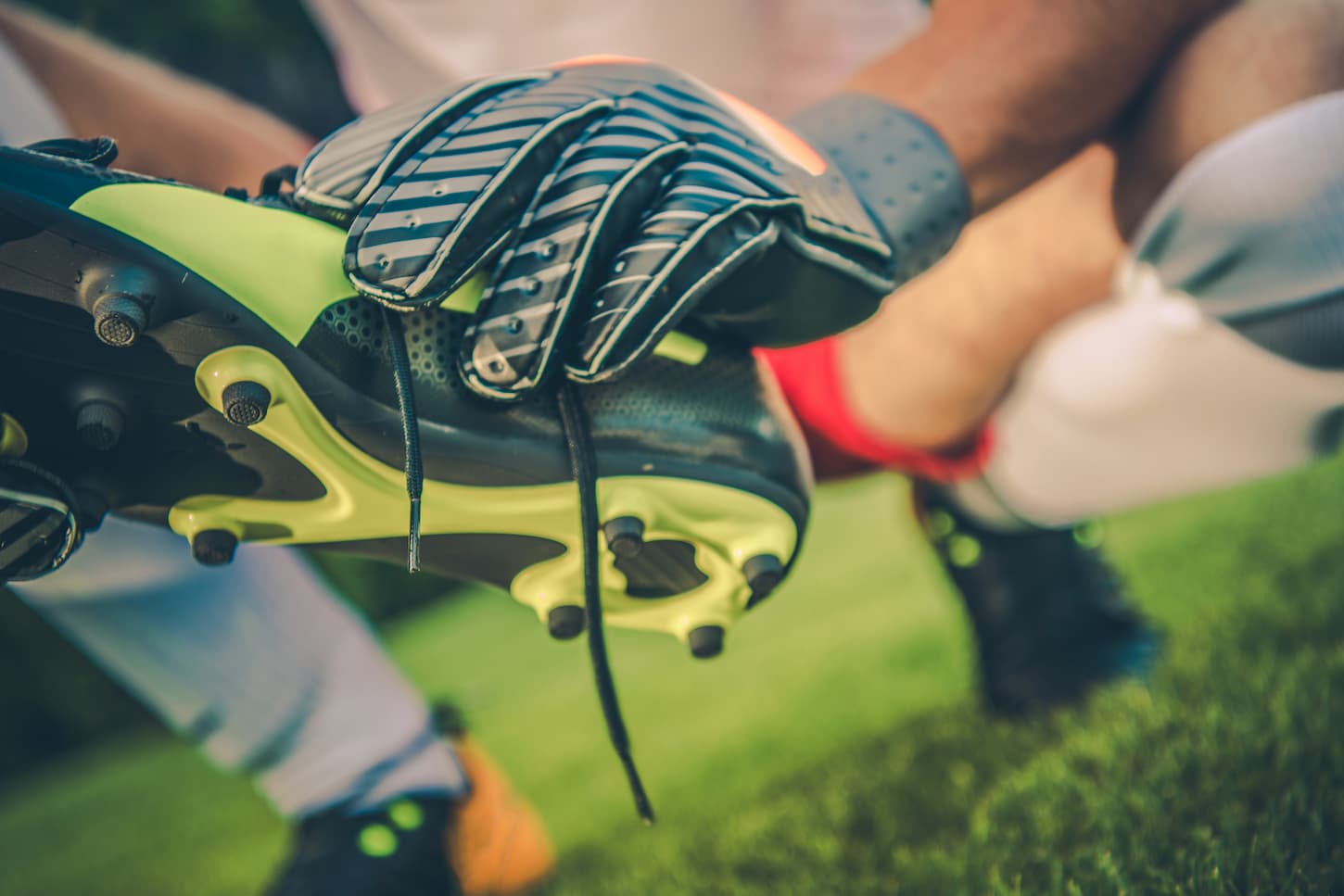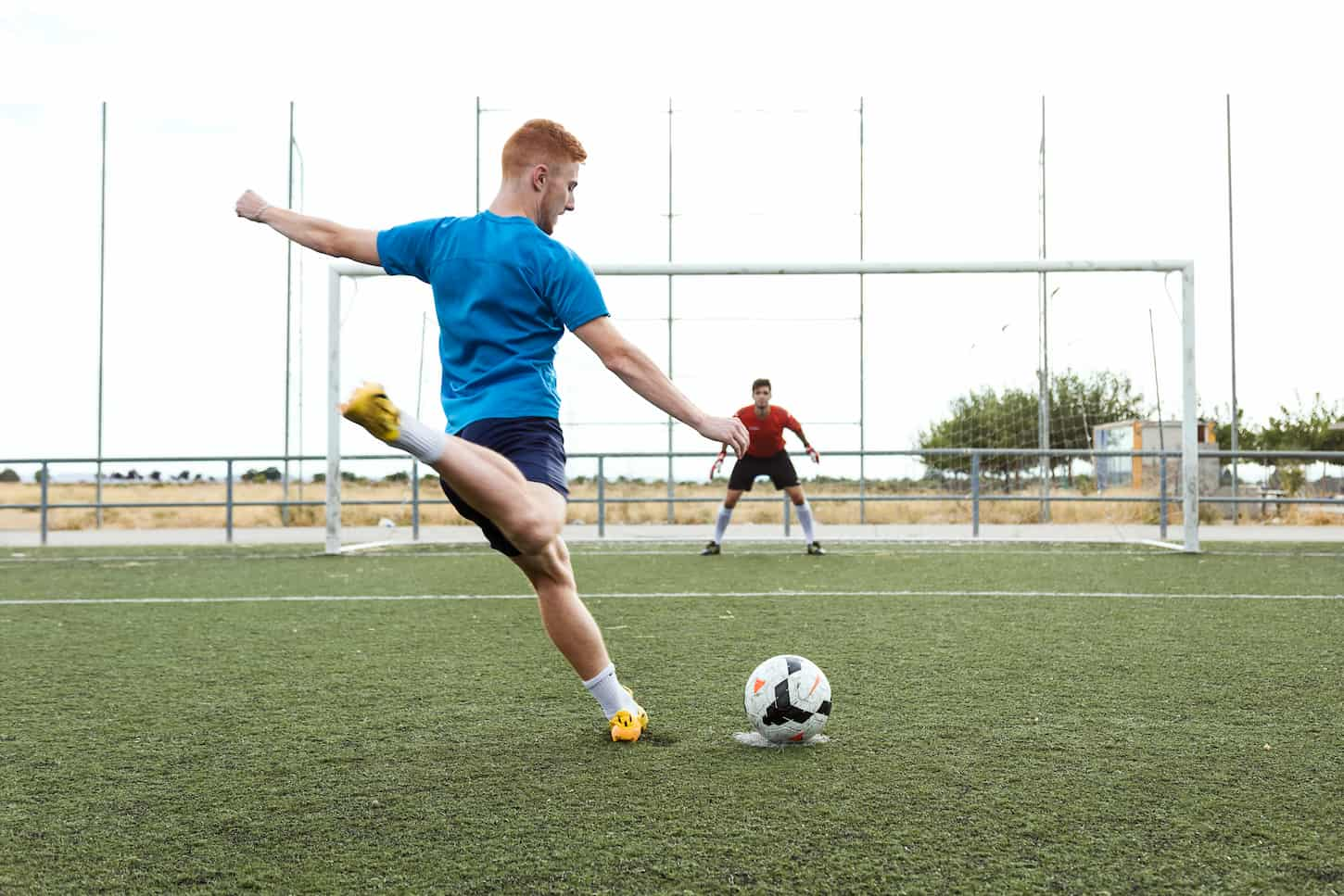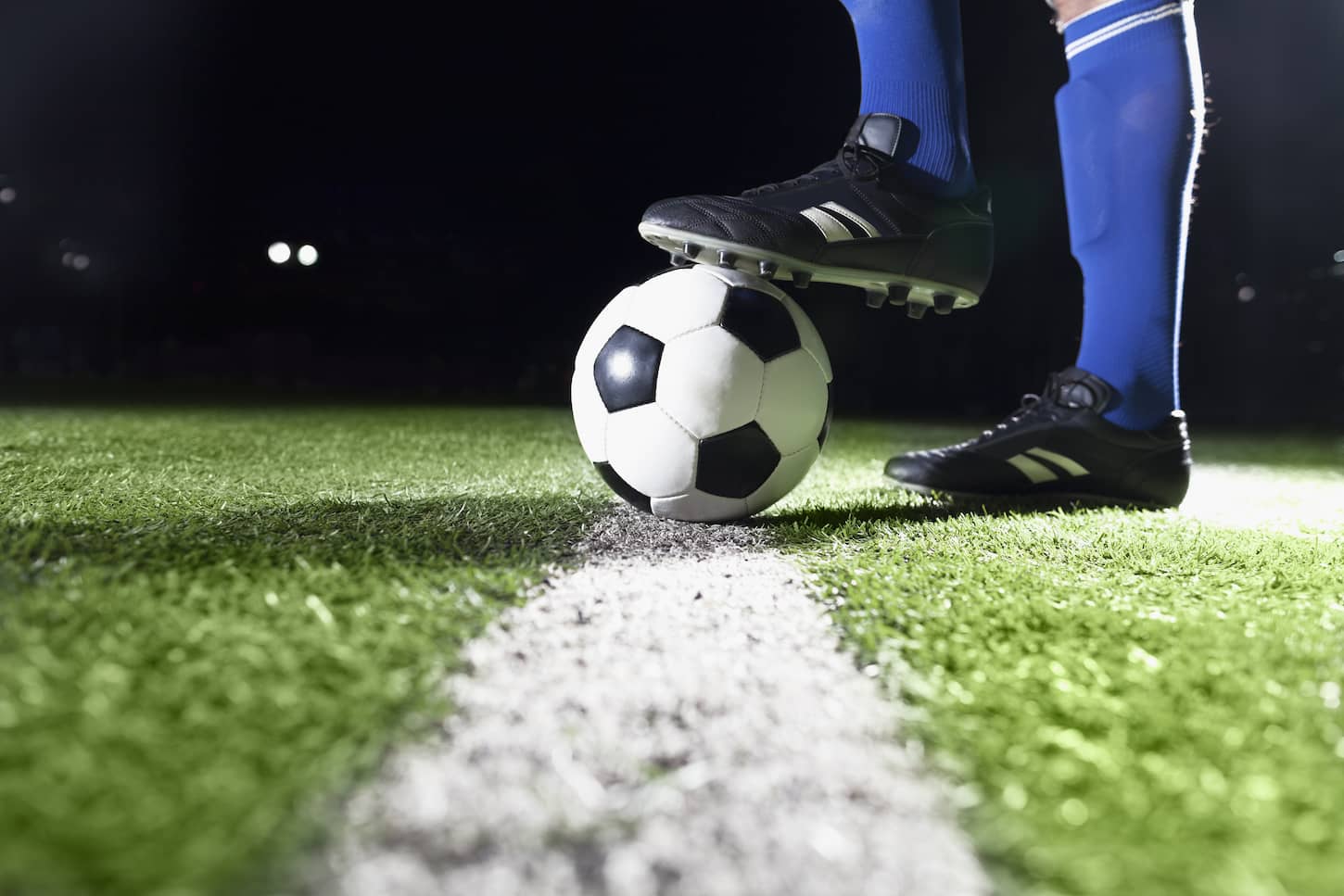If your kids play many sports, you probably understand how expensive shoes can be! My friend’s son has recently grown out of his baseball cleats, and it got me wondering if he could wear his soccer cleats instead of buying a new pair of baseball ones.
Soccer cleats can be used for baseball because they are versatile and flexible. However, it is not recommended to use baseball cleats for soccer. The main difference between soccer and baseball cleats is the toe stud. There is no toe stud on soccer cleats, but there is one on baseball cleats.
This article will discuss soccer and baseball cleats in more detail. To learn more about the differences between them, be sure to keep reading.

Are Soccer Cleats Always Appropriate for Baseball?
Although soccer cleats can be used for baseball, they aren’t always the right choice. If a child plays baseball at a serious or professional level, or if planning on playing long-term, it’s better to use baseball cleats – baseball cleats have better grip when running on the field.
My kids noped their way right out of little league baseball after trying (and not really liking) t-ball, though they did try wearing their soccer cleats for it.
My friend’s son is in little league baseball, and he gets away with using soccer cleats at his level. However, it probably won’t last much longer, and he’s only 8. Also, if your child plays baseball a lot and is serious about it, or if it will be a long-term commitment, it’s always better to go with baseball cleats.
It’s also important to consider your child’s feet before choosing which cleats to buy. Some kids may be more prone to tendonitis, for example, and therefore might require more support.
Soccer Cleats: A Brief Introduction
Soccer cleats are made for playing soccer. They are the most lightweight and flexible type of cleats because soccer requires lots of running and fast movement.
Ankle coverage is non-existent in soccer cleats, which means they offer more freedom of movement. This is good if wanting maximum flexibility and speed, but it’s not great for the safety and grip required in baseball.
Since they are so lightweight, they don’t have as much protection as other types of cleats. Many players favor soccer cleats due to their comfort and flexibility. My friend’s son prefers wearing soccer cleats because they’re so lightweight, which makes him feel more comfortable.
There are a few different types of soccer cleats to choose from, and the type of soccer cleats chosen will depend on the kind of terrain. Some types of soccer cleats include:
- Firm ground cleats: most suitable for firm, dry, and natural terrain such as grass.
- Soft ground cleats: suitable for natural and wet terrain.
- Artificial ground cleats: can be worn on any artificial turf or grass.
- Turf shoes: can be worn specifically on artificial grass
Before purchasing cleats for a child, be sure to consider where they will be playing, because some types of cleats won’t be suitable for specific terrains.

Baseball Cleats: A Brief Introduction
As the name suggests, baseball cleats are primarily used for baseball. They aren’t as versatile or flexible as soccer cleats, so they’re usually only worn for baseball.
Baseball cleats have a toe spike that offers extra grip and balance. Since baseball is a low contact sport, it is safe to have this toe spike on the shoes.
There are three main types of baseball cleats:
- Metal cleats
- Turf shoes
- Molded plastic cleats
The description below will explain the differences between the three of them.
Metal cleats
Metal cleats are perfect for playing on grass and dirt. They can dig into the ground, offering traction and stability. The metal cleats give added grip when playing on grass, so they’re a good choice if that’s the type of terrain that is played on.
Turf shoes
Turf shoes are generally worn when players are training off the field. These shoes are gentle on the terrain and won’t damage the ground as metal or plastic cleats would.
They offer the least amount of grip because in general, not much grip is needed when playing off the field.
A child should also wear turf shoes if playing on a turf field. These shoes will provide the proper grip on artificial turf because wearing other types of cleats can hinder stability and even cause injury on artificial turf.
Plastic cleats
Unlike metal cleats that are only appropriate for grass and dirt, molded plastic cleats are suitable for various terrains, including concrete and grass.
They aren’t as strong as metal cleats, which means they won’t get as good a grip in certain conditions. However, they’re generally more affordable and more versatile than metal cleats.
If I were going to buy my friend’s son a new pair of baseball cleats, I would go with plastic ones because he plays in many different fields throughout the season.
Differences Between Soccer and Baseball Cleats
The main difference between soccer and baseball cleats is the studs. Baseball cleats have a stud at the toe, but soccer cleats don’t. This extra stud provides control and stability while running between bases, but it wouldn’t be safe to have it in soccer cleats.
The reason it’s not safe to have a toe stud in soccer cleats is that soccer is much more of a contact sport. Having a toe stud would likely cause many injuries and accidents, so it’s not necessary for soccer shoes.
Another difference between soccer and baseball cleats are the types to choose from. Soccer cleats only come in one height: short. On the other hand, baseball cleats come in two main heights: low tops and medium tops.
The height that is chosen depends on the desired amount of added protection, flexibility, or stability. Low tops will give more mobility and flexibility, whereas medium tops will give more stability and safety.
Soccer cleats are much more lightweight than baseball cleats, so they’re generally more comfortable to wear. They also have an extra stud at the ball of the foot, which a baseball cleat does not have. This is important for balance and mobility when running on the soccer field.

FAQs
Now we would like to answer some FAQs regarding soccer and baseball cleats. If you still have questions, be sure to check out the FAQs below.
Is there a difference between baseball and soccer cleats?
There are a few differences between baseball and soccer cleats. The most common differences are:
- The toe and ball studs: baseball cleats have toe studs. Football cleats have a stud in the middle of the sole.
- The height selections: baseball cleats come in short and medium height, but soccer cleats only come in one height.
- The weight: baseball cleats tend to be heavier than soccer cleats.
Is there a difference between kids’ soccer and baseball cleats?
There are differences between kids’ soccer and baseball cleats. Kids’ soccer cleats don’t have a toe stud, but baseball ones do. Additionally, kids’ baseball cleats come in different heights. This makes kids’ baseball cleats more secure and sturdier than soccer cleats.
Even my friend’s young child notices the difference between soccer and baseball cleats. As the soccer cleats are more lightweight, he says they make it feel like he’s wearing socks rather than shoes.
Is there a difference in cleats?
All cleats are slightly different, which is why they have different names. There are cleats specifically for soccer, baseball, and football. Soccer cleats are the most versatile and don’t cover the ankles. Baseball and football cleats are heavier and have different cleat patterns and heights.
Football cleats come in three heights: low, medium, and high. Baseball cleats come in two sizes: low and medium. Finally, soccer cleats only come in one height: low. The higher the height of the shoe, the more protection the ankle receives.
However, with greater ankle protection comes less flexibility, which is one reason why football and baseball cleats aren’t suitable for soccer. You need as much flexibility as possible when playing soccer for the best performance.
Since soccer cleats don’t cover the ankles, your child can twist, turn, and run as freely as possible when wearing them.
Can my son wear football cleats for baseball?
It is acceptable for kids to wear football cleats for baseball but be aware that football is a higher contact sport, so the cleats are more robust and heavier than what is needed for baseball. Where possible, kids should wear soccer or baseball cleats for baseball.
If you only want to purchase one pair of cleats for all of a child’s different sports, I recommend choosing soccer cleats. Although it’s better to use baseball cleats for baseball, soccer cleats are the second-best option due to their adaptability and flexibility. Football cleats would come last.
Key Takeaways and Next Steps
Soccer cleats are the most versatile type of cleats. They can be used for baseball and other sports, so this is a good choice when buying just one pair. However, if you can afford to it’s always best to use the cleats intended for the sport in question.
For some great information and ideas about playing soccer, read the article we wrote: Soccer Equipment: Necessities, Costs, and Alternatives. That way, you’ll know more about what equipment you actually need, and when to buy the $20 cleats versus the $50 to $100 pairs.
Resources
Learning from your own experiences is important, but learning from others is also smart. These are the sources used in this article and our research to be more informed as a family of sports nuts wannabes.
- Liebeskind, Howard. “General Principles in Cleat Selection.” American Academy of Podiatric Sports Medicine, www.aapsm.org/cleatselection.html. Accessed 10 Jan. 2022.
